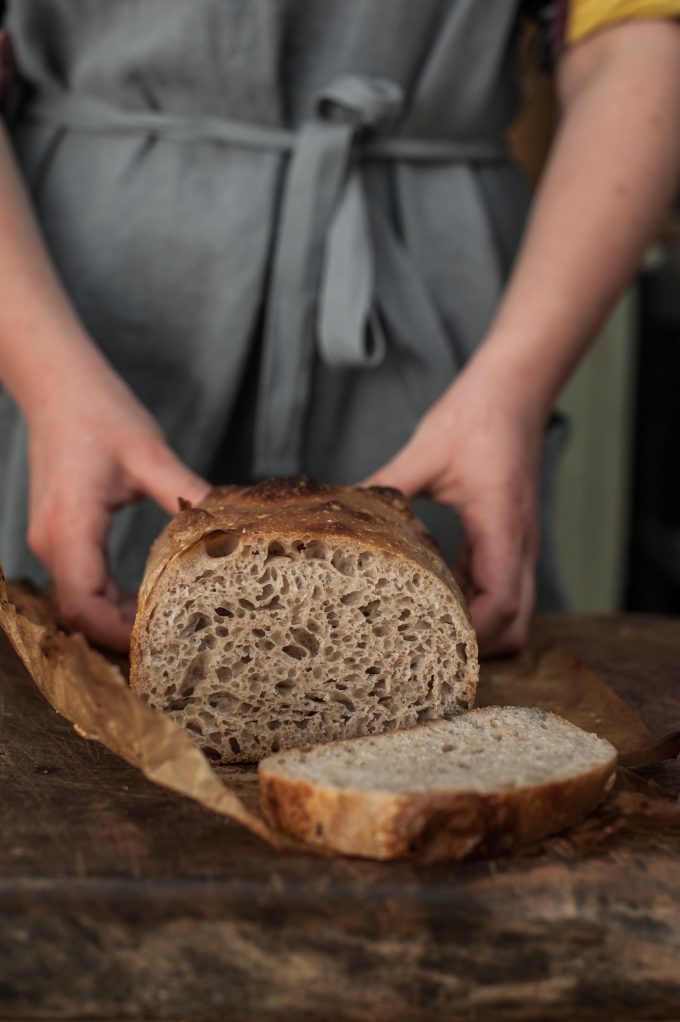
How we teach you to make sourdough
This is our easy basic sourdough tin loaf recipe and it is perfect for a beginner to learn how to make sourdough bread at home.
The Sourdough Club is where we teach you how to make our amazing bread. It is the part of the Sourdough School where we share our recipes, tutorials, tips and lessons, and support you so that you can learn how to make Sourdough wherever you are.
When you start baking sourdough, there is a lot to learn, so I recommend that you begin with a tin loaf. It gives you time to get into the rhythm of the schedule and get to know your flour.
This recipe has my suggestions for timings and temperatures that suit a typical 9 am to 5.30 pm working day, meaning that you refresh your starter in the evenings or before you go to/start work, and then bake to a convenient schedule. If you make things easy when you’re starting out, you’re much more likely to bake.
This loaf only takes about 15 minutes active work to make. I make two loaves: if that’s too much bread for you, then simply halve the recipe (or you can pay it forward by making two loaves and giving one away).
The long, slow fermentation process and the use of some wholegrain flour, combined with the oil, makes this loaf moist and wholesome, but not too heavy. It’s a great starting point.
How to build a starter:
Please follow my guide on how to create a sourdough starter. Alternatively, if you know someone who already bakes sourdough, then just ask them for some of their starter, or you can buy white sourdough starter here – this has been made from the sourdough starter that I use here at the School.
Equipment:
- A large mixing bowl
- 2 x 900g (2lb) loaf tins, or 4 small ones
- A thermometer
- 2 clean tea towels
- a wooden spoon
- 2 sheets of greaseproof paper, to line the tins
Time and temperature guidelines:
Day 1 – Thursday
9pm – refresh your sourdough starter. Use tap water at about 22°C.
Day 2 – Friday
8am – refresh your sourdough starter. Use tap water at about 22°C.
Day 2 – Friday
8pm – prepare and weigh out the ingredients.
Day 2 – Friday
8.30pm – mix the dough. Use your bubbly, lively starter. Try to mix your dough at a temperature of 23°C. Leave the dough in the tins on the kitchen side overnight, and remember to put your starter back in the fridge at a temperature of about 5°C.
Day 3 – Saturday
8am onwards – you can bake at any time from 8am, or you can store the dough in the fridge and bake a bit later (up until 4pm).
Makes: 2 large 900g (2lb) loaves or 4 smaller loaves (reduce baking time accordingly)
Ingredients:
- 200g bubbly, lively sourdough starter (this is called your second build – a starter that has been refreshed twice)
- 750g water at 27°C d
- 500g stoneground organic wholegrain flour or our Botanical Blend flour
- 500g organic strong white flour (13% protein)
- 20g fine sea salt
- butter/ghee or coconut oil, to grease the tin
- 2 tablespoons olive oil, to drizzle over the top and around the sides of the loaf
Directions:
Double refresh
It is very important to build the microbes in the starter, especially if you only bake once a week. This is called a ‘double refreshment’ or ‘second build’, as outlined in the timetable above, and it will make a beautiful loaf.
Mix
In a large bowl, mix 700g of your water with your sourdough starter – remember to pay attention to the temperature of the water. Mix well. Getting plenty of oxygen in at this point helps the yeast to reproduce. Add the flour and salt and mix until all the ingredients come together and are well combined.
You don’t need to knead: just mixing well is enough. Wait for 10 minutes, then add the remaining 50g water, incrementally (2 additions of 25g each), over the course of 10 minutes. Allow each addition to absorb before adding more. This technique helps create that beautiful open crumb, because the gluten can form stronger bonds when the dough is less hydrated.
Prepare the tin by greasing a sheet of baking parchment lightly with butter, ghee or coconut oil (but not olive oil), then line the tins with the baking parchment. Transfer the dough to the tins.
Prove
Leave the tins overnight on the kitchen table, each one covered with either a bowl with a wet tea towel over it or a reusable shower cap. Make sure to allow enough space for the dough to rise without the sticking. As a general guide, the ambient temperature here at the School, is generally about 23°C.
In the morning, your loaf will be 50% bigger. You can make your loaf sourer (and therefore more digestible_ by transferring it to the fridge for another 3–4 hours before baking.
Bake
Preheat the oven to 220°C/425°F/gas mark 7 for 30 minutes before you are ready to bake. Place a small pan of boiling water at the bottom of the oven (or use a Dutch oven if you can fit your tin inside one). The extra steam from the water will help to form a beautiful crust.
Drizzle the olive oil over the top and around the sides of the loaves. Just as you put the bread in the oven, reduce the heat to 180°C/350°F/gas mark 4 and bake for about 45–50 minutes. I don’t give exact timings, because everyone’s oven is slightly different. However, bake to the point that you like the look of the loaf – it should be a beautiful copper colour.
Storage
Let the loaves cool in their tin for a few minutes before cooling completely out of the tins, preferably on a wire rack. Once cool, I store my loaves wrapped in a clean tea towel.
Tips
You can see my video here on how to refresh your sourdough starter.
Leftover starter
It feels wasteful to discard when refreshing, but this gives the yeast a boost and is a necessary step because the acidity retards yeast. You will get flat, sour bread if you don’t remove some of your starter. You can use the leftover starter in to make things like pancakes or muffins – we have plenty of recipes for leftover starter on the Sourdough Club. It can also be composted.
Love Vanessa x
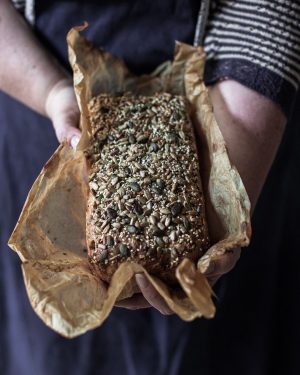
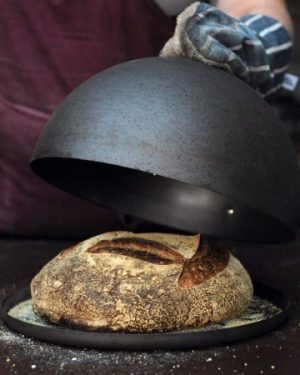
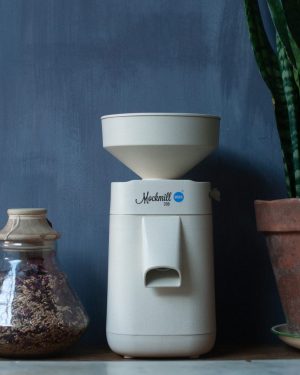
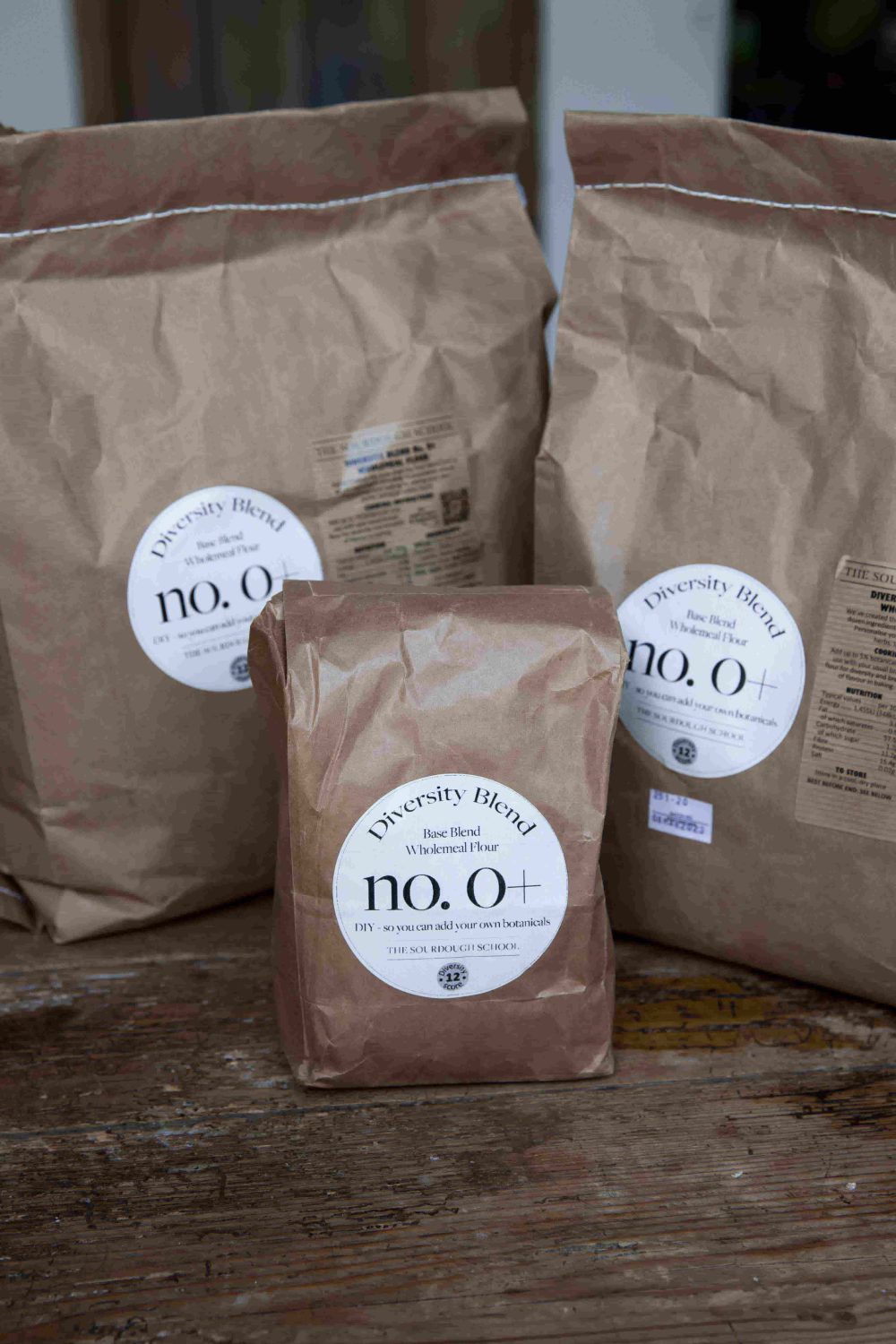
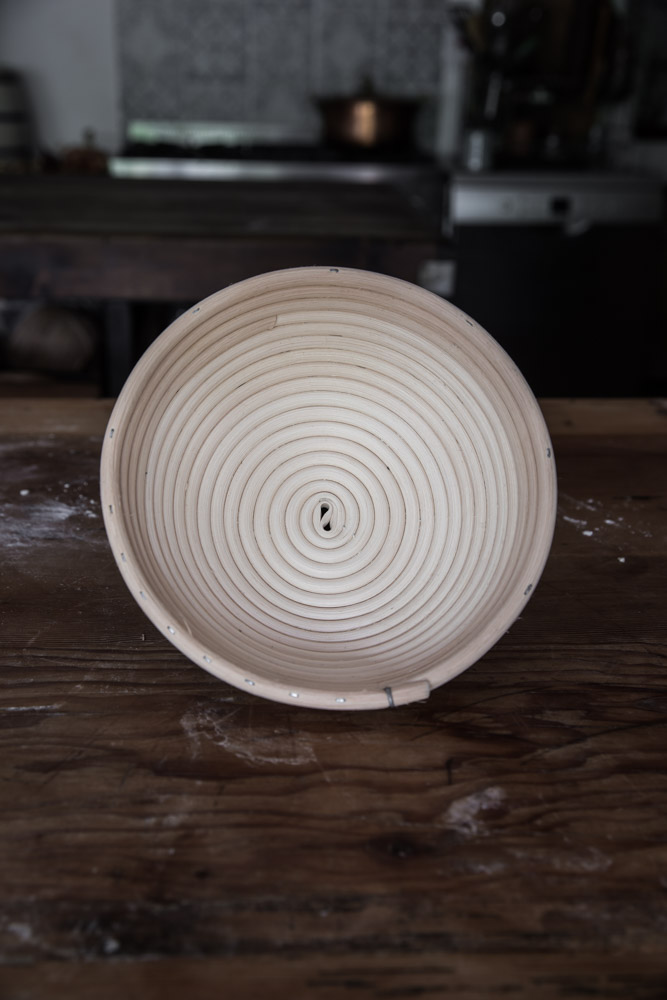

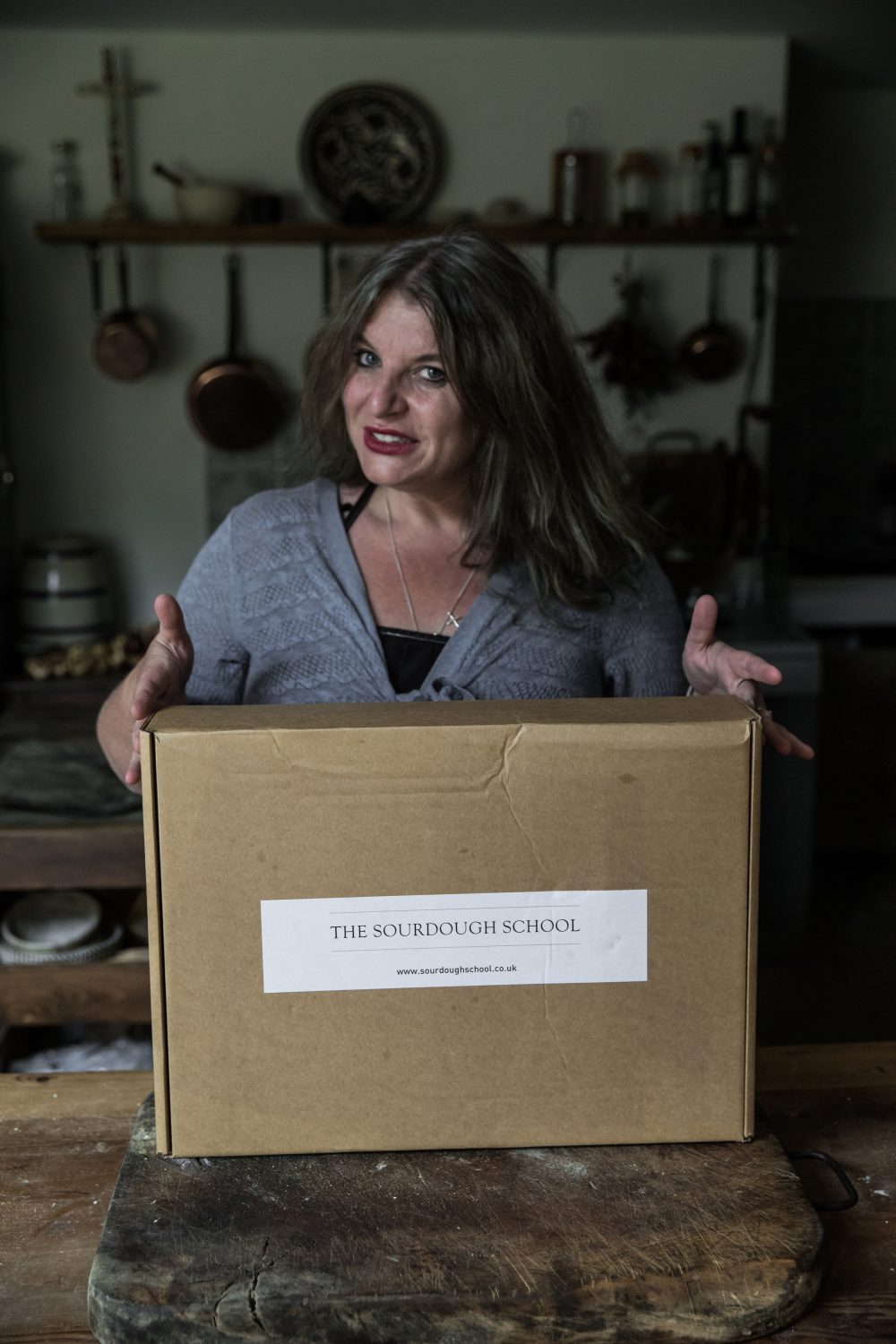
 The future of bread – Heritage wheat
The future of bread – Heritage wheat
The suggested bread tin optionally comes with a lid. Would it suffice to bake in the tin with the lid closed, instead of using the pan of boiling water or Dutch oven called for in the recipe?
Absolutely 🙂
Once the starter has been double refreshed and refrigerated does it need to be double refreshed again before using or refreshed just once?
Hi Tara
We take out Xg of our refrigerated starter, and double refresh. After the second refreshment we then either, make a leaven with it to bake with, or put it back in the fridge. If you are just carrying out a refreshment to feed your starter and then put it back in the fridge you can get away with doing this refreshment just once. If you are planning to bake then you double refresh it. I hope this helps. You can now speak with Vanessa live at 4pm on Thursdays via Zoom. Please do submit your question here for her. We hope you can attend. https://thesourdoughclub.com/speak-to-us-live/
Can you freeze a loaf for later without compromising the integrity?
HI Dory yes absolutely. Just slice it, wrap it and freeze it and take out as needed 🙂
Will it do any harm to leave the dough in the fridge until around 5pm when I get home from work?
Hi David. That shouldn’t be a problem!
Am i being totally daft? when you do a double refresh over a couple of days, take the 25g then ad 100g each water & flour, next day do you exactly repeat that i.e. take 25g and add water OR just add 100 flour & 100g water to what you have
Yes, you always take out a small portion (25g) and feed that with the 100g each water/flour.
Hi Vanessa,
Thanks for an amazing recipe! My baked bread has cracked around the top of the loaf, and has formed a hard ‘shell’ on the top surface. I’m thinking I may of overproofed the dough or should of done a score on top to help release some gases. Anything recommendations?
Best,
Theo
Hi Theo. It sounds like your dough is drying out on top. I’d keep it covered with a damp towel, and you can also mist the top of the dough with water or olive oil to keep it moist. We don’t score our tin loaves typically because they are so fermented that they’d just collapse from the scoring.
Hello! I was wondering about how to best use whole grain, home ground flour? Should we sift it? Remove any of the bran? And if we want to incorporate some Red Fife for flavour (which is low gluten formation) is there a way to do that and still get good rise and bread formation? So many questions, sorry! We’re trying to use more whole grains but find that baking becomes a lot more failure-prone. Any suggestions appreciated, and thanks!
Hi, there’s no need to sift out the bran, as this is where most of the nutrition is. If using home milled flour, you can use it straight away. But for maximum gluten development, ageing it for a week or so will give you stronger gluten development. Try substituting 10% of your wholegrain for Red Fife to start with and see how that goes. You can always increase the percentage to see how far you can go! The beauty of using a tin is that you can use lower gluten containing flours such as heritage grains, and the tin will give you the structure.
Dear Vanessa, Dear Sourdough School,
As a newcomer to baking, and a freshly minted novice with regard to sourdough, this recipe (and your website in general) have been a godsend!
The recipe is simple and amazingly effective, and my family (and my neighbours, and my friends, and …) and I LOVE the results. I don’t know if the recipe is foolproof, but this fool has been able to prove that it works three times in a row, so maybe it is?
I’ve also tried it with whole grain Emmer flour, as well as 50% Spelt flour/50% strong flour, and it worked perfectly both times.
You have made a baker out of a bumbler, and I graciously and gratefully recognise your contribution to the world of bread, and thank you with all my heart (and my palate, and my stomach…)!
Hi Michael, thank you so much for your lovely comments. I’m so glad to hear you’re enjoying the tin loaf recipe. Onwards and upwards! Vx
Hi Vanessa – do you recommend scoring the top of a tin loaf as you would with a shaped loaf? Many thanks – Stu
Hi – this is a very basic recipe and just leave as is, no scoping needed. No problem if you do either.
Worked great for me. Many thanks
Hi Vanessa
Is it possible to “rescue” a dough that totally failed to rise overnight ?
Trying your sourdough recipe above … my starter had pretty nearly doubled in size after the 2 feeds.
I only wanted to try 1 loaf; so halved the ingredients, including starter.
After overnight prove (probably nearer 18°C than 23°C) – Absolutely flat dough, just spread across tin.
What would happen if I remixed the dough with 2 tsp commercial instant yeast (premixed with water and a tsp sugar) ?
Thanks
Tony
Hi Tony, this is a very simple recipe for beginners and it does seem strange that it didn’t rise at all. I suspect that you need to refresh your starter more and get it really lively. To rescue it I wouldn’t add yeast – I would probably turn out the dough on an oiled baking tray, add olive oil to the top and dimple the dough with your fingers and throw on some herbs to make a flat bread/ foccachia style. V
What’s an example of stoneground wholegrain flour and an example of
strong white 13% protein flour? Would einkorn work for the wholegrain in this recipe?
Thanks!
Hello Amanda, if your wholegrain flour doesn’t say stoneground on the label then it will be roller milled. Strong while flour should have the protein level on the label as well. Sometimes the higher protein white flours are called ‘very strong’ white. You can use Einkorn and if that is what you have though – as this bread is in a tin it is very tolerant. Happy baking V
Hi there
Can you explain, please, why there is no stretching and folding for this loaf.
Also, I have been told that tap water should be avoided as the chemicals damage the natural yeast – trye or false?!
Hi John, this is a very simple recipe for beginners to build their confidence and there are no stretch and folds because the tin holds the shape of the dough. Stretch and folds are used to build a stronger gluten structure. There is nothing wrong with using tap water, if your water is highly chlorinated then just leave your water on the side for about 20 minutes before you use it. Vx
Hi, thank you for the great recipes, this will be my first time trying this one and I’m not sure what if any shaping is required before transferring the dough into the tins? Does it just go in without being formed?
Thanks again, Kay
Hi Kay, this is a very basic recipe for beginners and because you are using a tin to support the dough you don’t really need to shape it. Vx
Hi Vanessa, I’m still not clear what to do for the 2nd refresh. Do I (1) add 100g of flour & water to the refreshed starter from the night before or (2) take a tbsp of the refreshed starter only and add the 100g flour & water to that for the 2nd refresh. Many thanks, Ann
Hi Ann – it is the 2nd option, take a tbsp of starter, add 100g water and flour and discard what remains of the 1st starter. Vx
If you only take a tablespoon of the starter from the first day, surely you won’t have enough starter for the recipe which requires 200g? ?
I have been refreshing the whole thing and it’s been working pretty well, but I’m a novice!!
Hello Amanda, the tablespoon of starter from the first build is used to refresh the second build, so say one tablespoon of starter adding 100g flour and 100g water and discarding what is left of the first build. You can find some information here: https://www.sourdough.co.uk/getting-a-sourdough-starter-going-from-scratch/ and a lot more information on starters and starter maintenance in the Sourdough Club https://thesourdoughclub.com/ which you would need to join. V
Hi Vanessa. What happens to the mother? Or are you discarding this each time and only carrying forward 25g?
Yes you keep 25g and rebuild this each time.
best
Vanessa
Are you discarding the mother or do you keep an original mother if so how is it fed? Or, does the refreshed starter discard become the new mother? I’m confused! Thanks.
HI Georgina yes the most recently refreshed leftover starter becomes the new mother. Always keep the most recent leftover because it has the highest levels of microbes each time. Any leftovers from previous refreshments can be kept in a ‘leftover’ pot in the fridge if you prefer not to compost it, and this can be used in pancakes, scones, cakes, biscuits, all kinds of recipes that will benefit from a little sourdough starter in them for flavour complexity, as opposed to the rise that the most recently refreshed starter gives to dough. Hope that helps? 🙂
I’ve read the replies but still don’t understand. The recipe calls for 200g of starter, then I need about 250g to put back in the fridge for next time, that makes 450g. Where do I get that from if as I refresh the starter I only use 25g of it + 100g flour + 100g of water? Thanks!
Hi Marco. Anytime you are baking with your starter, you should be refreshing it again after you use it. So when you use the 200g of starter for this recipe, you use all but 25 grams of your active/refreshed starter. You’ll then feed that 25 grams again (with 100g flour and 100g water) before putting it back in the fridge. Hope that helps clarify!
oooh! got it now, thanks!
Sorry one more question. When not making bread, I read starter should be refreshed anyways once a week. Does that mean two builts? Or just mix 25g+100+100 in a new jar and put back in the fridge? Thanks!
Hi Marco! Good question! Just the once is fine if you are not planning to bake with it.
Hi Vanessa!
I was given a lovely starter and followed your tin recipe.. But I only had strong white bread flour and after the overnight prove I now have 2 overflowing tins of bubbly runny dough!
Do you think it’s because of the white flour only? Or was it a mistake to start my sourdough journey in hotter weather?! I assume it’s not meant to be overflowing but more solid?
Many thanks,
Ruth
Hi Ruth. It’s not meant to overflow and the hot weather certainly speeds up the starter. This is just the start of your learning, it won’t be just because of the flour. Was there room for a 50% rise in the tin? If you can’t bake it then tip the dough out into a baking tray, push your fingers into the dough and drizzle some olive oil over it and any flavouring or herbs you want and turn into a focaccia or pizza base. Good luck!
Two questions. I made a leavan from my starter with 1bsp etc in the evening as I always do with the recipe I use. Are you saying I have to take 1tbsp from this in the morning to refresh and add 100g flour and 100g water again? Or do I add 100g of each to what I made the night before. When I make the leaven the previous evening I just go ahead and bake the food,lowing day.
Many thanks. Irene Robinson
Ye it is called a double refreshment – it builds up lots of yeast and you get a bread that rises.
Hi there,
I have your book, and have just made my first loaf from it, I’ve tried various recipes on line first. I’m very confused to why you turn the oven temp down to 180 when everyone else seems to keep it hot at 220. I found the crust was better with the hot temp. It’s just thrown me when I finally have started the get it and now this! Thanks.
Hi Vicky, all ovens behave differently. If your bread is cooking in a cloche or Dutch oven then heat is retained. But use the sourdough loaf record so you can adapt your baking to suit. V
Wow, my comment posted yseterday about not having to discard the starter (known as the ‘scrapings method’ was deleted. Think I’ll skip using or shopping from this web site! Shame the site’s owners don’t want to encourage alternative viewpoints! There are lots of different ways to bake.
Hi Jen that would have been an accident! We would never delete someone’s comment if it was sourdough related etc. I am very sorry indeed! Please do re-post it! I cannot find it. Best Lucy
Do I have to use a tin or can I freefom shape my loafs
Thank you for sharing this recipe
Mark
Hi Mark for this recipe and schedule/timings etc you will need to use a tin. For a boule recipe please see here: https://www.sourdough.co.uk/category/recipes/
If you would like to learn how to make sourdough online with every detailed element included we have the Sourdough Club https://thesourdoughclub.com/join-the-sourdough-club/ with over 40 sourdough recipes and over 70 video tutorials covering every step, a forum to connect with other members and support from Vanessa as needed. It is a membership website. You can read all about it here: https://thesourdoughclub.com/join-the-sourdough-club/
Warmest wishes Lucy
Hello Lucy!
I’ve made my own starter and experimented using several recipes throughout quarantine. My goal is to really learn the properties and behaviors of sourdough. Can you explain why this recipe only works for a tin and not freeform loaf? Is the structure not strong enough? is the rise different? Or does it have to do with hydration and the rate the outside would burn? Just wanted to understand the science behind this.
Thanks so much for feeding our sourdough journies 😀
Jeanine
Hello Jeanine, this is a very basic recipe for beginners to build their confidence and start to learn how to use sourdough. By all means try this without a tin but the gluten structure is not so strong with no stretch and folds. Good to experiment but do record what you do so you can learn and adapt next time. Vx
I am puzzled about the direction to drizzle olive oil down the sides….it is in a tin so I don’t see how?
Hello Carolyn, we drizzle oil over the top and the edges of the dough where it meets the tin edge. V
You don’t really necessarily have to. Many people, including myself, use the “scrapings method” which doesn’t throw out anything. Everyone has different ways of making sourdough, but if you’re interested, google it. Good luck!
HI Jen I have just found your comment – it wasn’t deleted it just hadn’t been approved and replied to yet. We have to have that system in case we get spammed, which we do! Thank you so much for adding your comment I am sure people will find it really useful. Warmest wishes Lucy
Hi there,
How would you adjust the cooking times/temperature if you’re cooking in a 4lb tin?
Thanks ?
Hi Christina, as every domestic oven is different it is hard to be specific. I would probably keep to the same time and temperature and check at the end if it looks as if it needs a little longer. Do record what you do so that you can compate with next time.
Thank you for this information, it’s the first time I’ve seen an explanation for discarding the some of the amazing starter. I’m so proud of it I don’t want to pour it away!
You don’t really necessarily have to. Many people, including myself, use the “scrapings method” which doesn’t throw out anything. Everyone has different ways of making sourdough, but if you’re interested, google it. Good luck!
HI Jen I have just found your comment – it wasn’t deleted it just hadn’t been approved and replied to yet. We have to have that system in case we get spammed, which we do! Thank you so much for adding your comment I am sure people will find it really useful. Warmest wishes Lucy
Thanks for the recipe, I will try this. Till now, I have done bulk fermentation and then proving. In this recipe there is only one stage of fermentation/proving. Any reason for this? is this better than double proving? Pls can u explain, I am a beginner so trying to understand the logic.
It is an easy simple ambient tin loaf .. s only 1 step to proving
This looks good, thank you. I assume this recipe makes 2 900g loaves given the quantity of ingredients? However it says “Makes: 1 large 900g (2lb) loaf or 2 smaller loaves” so slightly confused.
Many thanks
Bradley
Hi Bradley yes apologies we did correct it a while ago now – I hope you saw and have been enjoying baking it. Lucy
Hi Vanessa, I am preparing to make this – does this recipe make enough for two 2lb loaf tins or just one? Thanks so much.
Sophie
Hi Sophie yes sorry that was our error we have corrected it – it makes 2x 900g tins
Hola mi nombre es Alfonso Curreri te escribo desde panama en estos dias de confinamiento me ha llamado mucha la atencion este mundo de sourdought.
Quisiera saber si me afilio a tu escuela y tus recetas y explicacion vienen en español
Hello Alfonso, you can find my book The Sourdough School translated into Spanish – try Amazon: Pan ecológico con masa madre (Español) Tapa dura – 8 noviembre 2018
Happy baking
Dear Vanessa, Could you please share the basic recipe of the gluten free soughdough starter and bread. What type of the gluten free flour is best to use for the starter and bread?
We don’t do gluten-free at t the moment.
Hi Vanessa,
Thanks for this great, easy recipe. I am a teacher living in Melbourne, Aus. I have been on Easter hols in covid and so decided to try making sourdough (including the starter).
I have just baked my first one of these. It looks and smells grand and got a good rise overnight (maybe 40%) but has ended up pretty heavy after baking. Any ideas where I might have gone wrong…?
Ali there are so many variables, very strong flour but most likely is that you either didn’t build up the starter enough.
kind regards
Vanessa
Hi Vanessa
I have attended courses with you,I’m experimenting with rye flour I wonder if you could help me with a simple recipe for a rye loaf in a tin
I have your sourdough bread book but don’t want to make a large boule
Also I read you can use the discard would it be ok if this was white starter?
Many thanks
Sarah
Morning Vanessa
Instead of a loaf tin could I just do a large cob?
Happy Easter and best wishes
Emma
yes.
Vx
i normally add the leftover starter to a buckwheat pancake batter to make Galettes De Sarrasin – Buckwheat Pancakes.- Delicious
That sounds delicious.
That sounds lovely, can I have the recipe please. Lorraine
I’m intrigued. It’s the first time I’ve heard of doing the bulk ferment, proofing and baking in the same tin, I already bake Do Nothing Bread proofed and baked in a double pan so I’ll give this a go